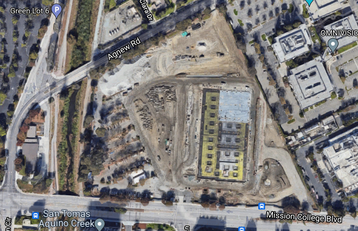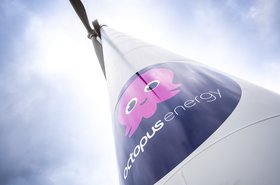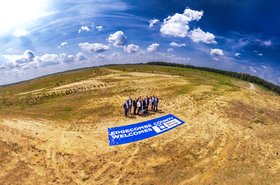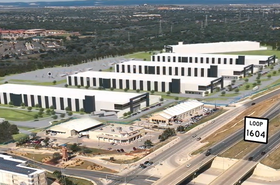Amazon Web Services (AWS) plans to enter into a 15-year 20MW deal that would source power from from fuel cell company Bloom for a planned data center in Silicon Valley.
AWS hopes to source the gas power for the 2315 Mission College Boulevard data center after utility Silicon Valley Power (SVP) called for in-city generation proposals to help it meet demand.
SVP would sign the PPA with Bloom, while AWS would sign an offtake agreement with SVP for the power.
The 2315 MCB data center is set to have a substation with a 99MVA nameplate capacity at full build-out with four transformers. Two transformers are currently being built.
"Typically, data centers will use 55 percent of the nameplate capacity," City of Santa Clara documents state.
AWS has an initial 9MVA for its use at the data center, with a contract for a 10-year load ramp to 32MVA by 2034. The Bloom PPA would be additional power.
Amazon will be expected to pay all of the costs, including SVP staff, maintenance, gas, and operations costs. The electricity is expected to be 50 percent more expensive than the current rate for SVP industrial customers.
First-year costs are expected to be around $35 million, including a five percent payment to the city's general fund. Also included are the costs of renewable energy credits (RECs) to 'offset' the use of natural gas.
In a city meeting over the project, chief electric utility officer Manuel Pineda said that at least four other customers are interested in similar deals.
Amazon previously announced it would deploy 72MW of Bloom fuel cells in Oregon fueled by natural gas, but scrapped the plans in June - partially due to local pushback over carbon emissions.
According to the US Energy Information Administration, electricity generated from coal in the US produces about 1kg of CO2 per kWh, while electricity from oil produces about 1.1kg. In comparison, natural gas produces 430g of CO2 per kWh.
While lower than other fossil fuels, it remains higher than the emissions from solar (48g/kWh), wind (12g/kWh), and nuclear (12g/kWh).
Earlier this month, a group of AWS employees said that the company was distorting the truth about how green its data centers were, and criticized its use of RECs. The group's research showed that 68 percent of Amazon’s REC purchases are “low-quality and do nothing to build new, additional renewable energy.”
These credits, the group claims, “simply trade around paper claims on electricity that other people already generated and consumed.”
AWS told DCD in a statement: "Amazon’s Sustainability Report has the correct data, transparent published methodologies, and third party assurance. The paper you’re referring has incorrect findings and assumptions, likely because, as its authors admit, it’s based on data and opinion from outside the company.”







